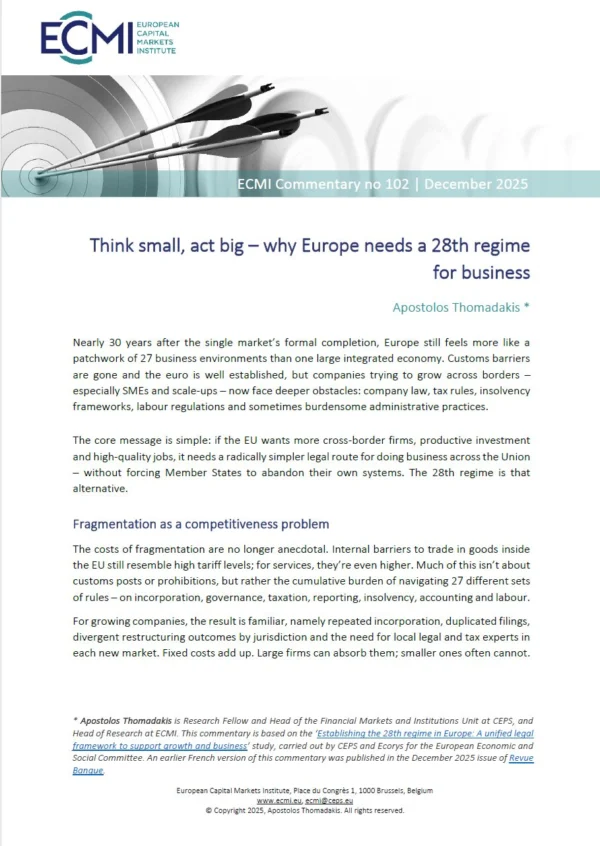Building a Social Europe has received due attention since the founding of the European Community in Rome. The European summit in Lisbon in 2000 was an important milestone in this process. European leaders committed themselves to working together through the ‘open coordination’ method to develop a policy to combat poverty and social exclusion. The open coordination approach means that countries exchange information and encourage each other to pursue policies geared to their social objectives. The European Union does not itself play an active role in the way in which individual member states set about achieving those objectives. It has however been agreed that member states will draw up a National Action Plan every two years setting out the way in which they plan to realise their objectives.
Member states differ in the way they have structured their social policy. Chapter 2 offers a description of the different European welfare states. It is based on a widely used typology that was developed 10 years ago by Esping-Andersen. Broadly, he identified three types of welfare states: the liberal welfare state, which has the least generous provisions (the United Kingdom and Ireland); the social-democratic welfare state, which is geared primarily to reducing income differentials (the Scandinavian countries); and the corporatist welfare state, which places emphasis on social insurance for employees (Germany, Austria, France, Luxembourg and Belgium). Chapter 2 shows that in the Mediterranean countries (Greece, Spain, Portugal and Italy), a particular type of welfare state is emerging in which the social safety net is still under development.
The European Union is also committed to achieving economic objectives. In Lisbon, EU leaders pronounced their ambition to make Europe the most competitive and dynamic knowledge economy in the world, capable of achieving sustainable economic growth with more and better jobs and greater social cohesion. Objectives were formulated among other things on promoting employment and increasing productivity. The question is whether the economic objectives can be reconciled with the social objectives. Will the European ambitions face dilemmas because social cohesion can only be maintained at the expense of economic performance? The analysis in chapter 3 shows that the social-democratic welfare states have succeeded in combining an egalitarian income distribution with high productivity and high labour participation rates. This illustrates that the trade-off between economic and social performance does not necessarily appear.
Nonetheless, there is ample evidence of a trade-off between social and economic objectives with respect to particular labour market institutions. Chapter 4 shows that individual welfare state arrangements, such as an extensive social security system, progressive income tax and stringent labour market regulation, generally have a favourable effect on social cohesion but reduce the incentive to participate. In order to achieve the objective of high labour participation rates, rationalising the welfare state might be considered. The price for this is greater income inequality. For many countries the challenge will be to structure the welfare state in such a way that social and economic objectives are in balance.
This challenge will become more urgent in the coming decades in light of a number of national and international trends. Chapter 5 discusses these trends: ageing, immigration, information and communication technology, individualisation and increasing policy competition. They all point in the same direction: they put the European welfare states under pressure and reduce the scope for reconciling economic and social objectives. Trends thus pose a particular threat to the social cohesion objectives of the European Union.
Does this call for a greater role for ‘Europe’ in social policy? The principle of subsidiarity, which applies within the European Union, means that an active role for Europe can only be desirable if it produces advantages for the member states compared with national policy. The analysis in chapter 6 shows that this is currently the case only for the removal of institutional obstacles to labour mobility. In other areas of social policy, it does not appear to be the case. For example, there are no indications of ‘social dumping’, where individual countries systematically relax social policy in order to attract businesses and talent from other countries. At the same time, the diversity in institutions within the EU is large, as is also evident from the characterisations in chapter 2. The enlargement of the European Union, with 10 new member states joining in 2004, will increase this heterogeneity further and boost the need for diversity in social policy. Harmonised social policy will then become less attractive. As public opinion in the European Union also provides no support for a common European social policy, the ‘open coordination’ approach would appear to be a better way of achieving the aim of a Social Europe.
0
More CEPS Publications
12 Published Publications
Related Publications
Browse through the list of related publications.












